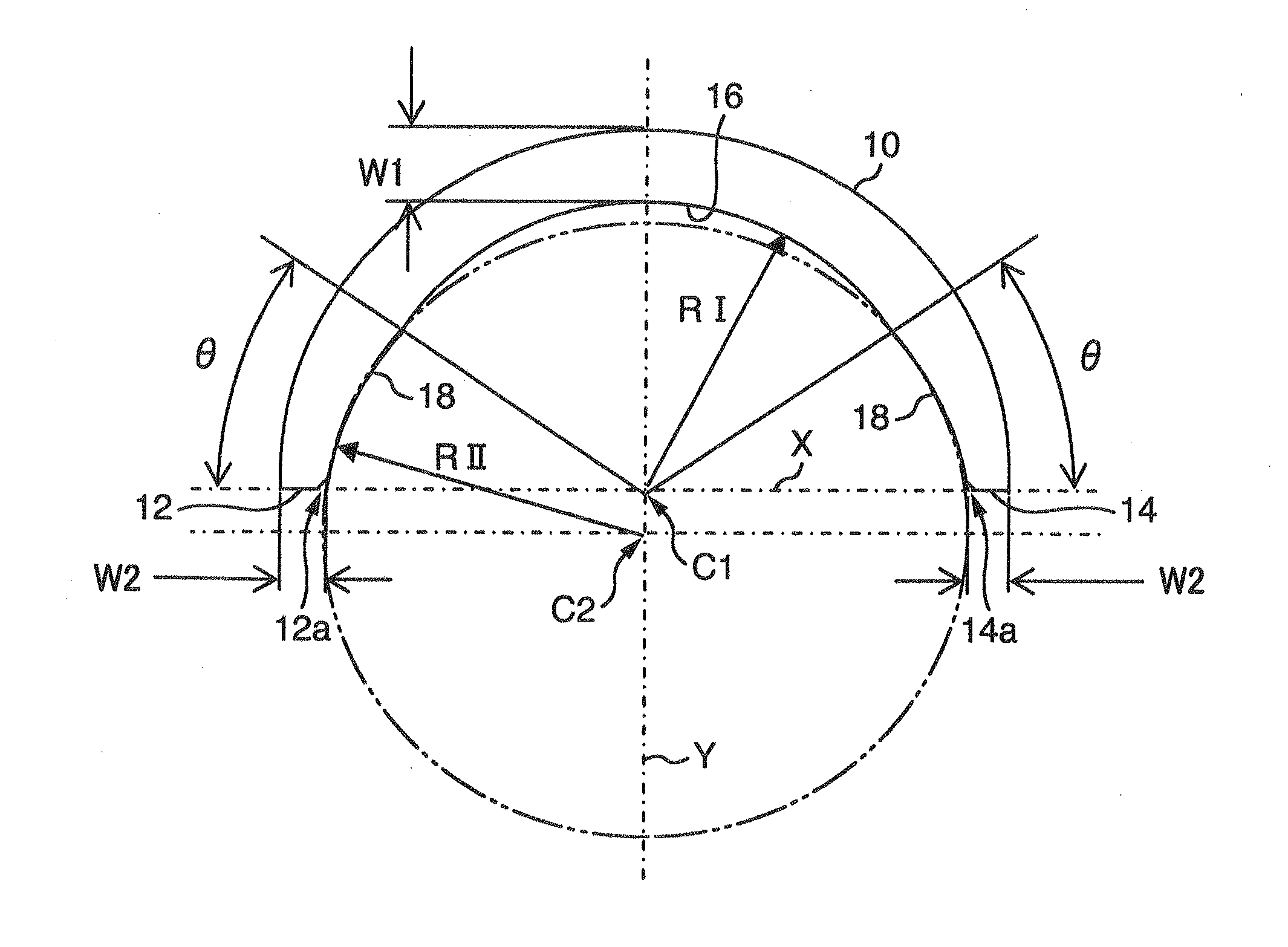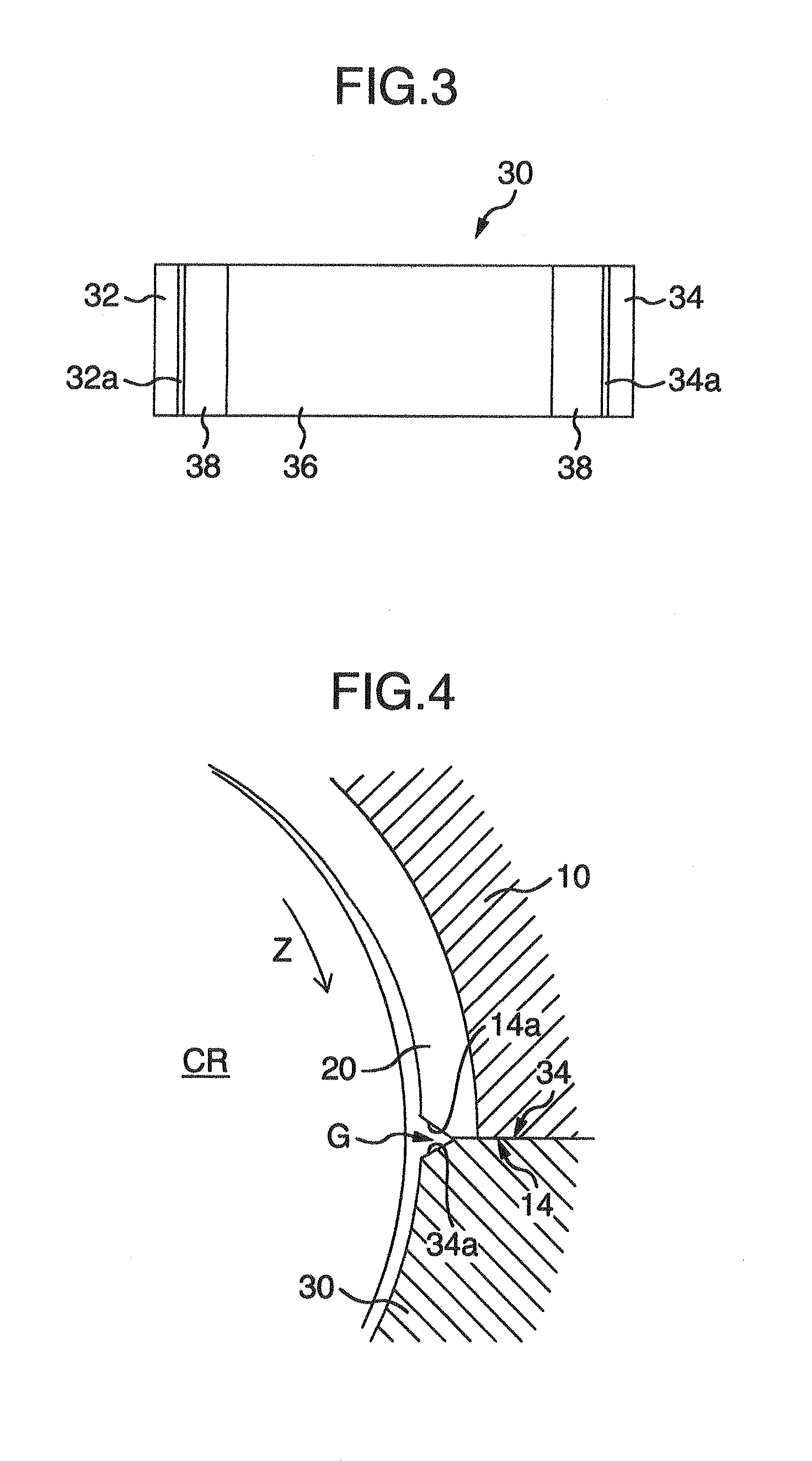Sliding bearing for internal combustion engine
a technology for sliding bearings and internal combustion engines, which is applied to sliding contact bearings, mechanical equipment, rotary machine parts, etc., can solve the problems of increasing the possibility of sliding surface damage and increasing the possibility, so as to reduce the conformability of bearings, reduce the amount of lubricant oil leakage, and reduce the effect of load capacity
- Summary
- Abstract
- Description
- Claims
- Application Information
AI Technical Summary
Benefits of technology
Problems solved by technology
Method used
Image
Examples
example
[0034]Hereinafter, an embodiment of the present invention will be described with reference to the attached drawings.
[0035]FIG. 1 is a view showing a semi-cylindrical bearing 10 for supporting a crankshaft of an internal combustion engine according to one embodiment of the present invention, which is shown from its axial direction. FIG. 2 is a view showing a bearing inner circumferential surface of the semi-cylindrical bearing 10. The semi-cylindrical bearing 10 is combined with the other semi-cylindrical bearing 30 (FIG. 3) in a substantially the same shape into a cylindrical shape to be a sliding bearing for a crankshaft. The difference between the both semi-cylindrical bearings 10 and 30 is that a circumferential oil groove 20 is formed in the central portion of the bearing width of the inner circumferential surface of the semi-cylindrical bearing 10 all over the entire length in the circumferential direction. The other structures of the both semi-cylindrical bearings 10 and 30 ar...
PUM
 Login to View More
Login to View More Abstract
Description
Claims
Application Information
 Login to View More
Login to View More - R&D
- Intellectual Property
- Life Sciences
- Materials
- Tech Scout
- Unparalleled Data Quality
- Higher Quality Content
- 60% Fewer Hallucinations
Browse by: Latest US Patents, China's latest patents, Technical Efficacy Thesaurus, Application Domain, Technology Topic, Popular Technical Reports.
© 2025 PatSnap. All rights reserved.Legal|Privacy policy|Modern Slavery Act Transparency Statement|Sitemap|About US| Contact US: help@patsnap.com



